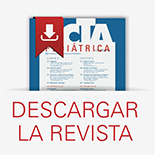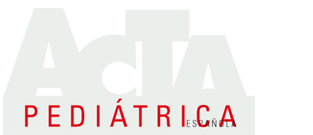Resumen
Introducción: La lactancia materna exclusiva es el mejor método de alimentación del niño durante los 6 primeros meses, y la recomiendan la mayoría de los organismos e instituciones. Pero las tasas de inicio y su duración son todavía muy bajas y variables.
Material y métodos: Se entrevistó tras el parto a las madres que dieron a luz en el hospital durante los años 2001-2003 para conocer el método elegido de alimentación del niño. Se siguió durante el primer semestre de vida a las que amamantaban al alta para conocer la duración de la lactancia y el motivo fundamental de abandono.
Resultados: De 1.166 madres (1.185 recién nacidos vivos), el 69,9% tenía intención de amamantar. De 1.170 niños estudiados, el 31,5% recibió siempre leche artificial; del resto, el 17,4% abandonó la lactancia en la primera semana, el 3,8% entre las semanas 1 y 4, el 12,7% entre las semanas 4 y 12, el 20,8% entre las semanas 12 y 24, y el 13,8% siguió la lactancia tras la semana 24. Las causas fundamentales de abandono fueron: fallo de la técnica de amamantamiento (45,2%), abandono natural (22,1%), trabajo (11%) y enfermedades maternas (8,6%). En las primeras 4 semanas la causa fundamental de abandono es la mala técnica (el 58,1 frente al 41,3%), seguido de enfermedades maternas (el 17,4 frente al 6%) y enfermedades del niño (el 9,8 frente al 2,4%).
Conclusiones: La lactancia materna es un método de alimentación sujeto a muchos factores externos, que se podrían modificar con una educación adecuada de las madres y su entorno, así como con la puesta en marcha de medidas institucionales que la protejan.














